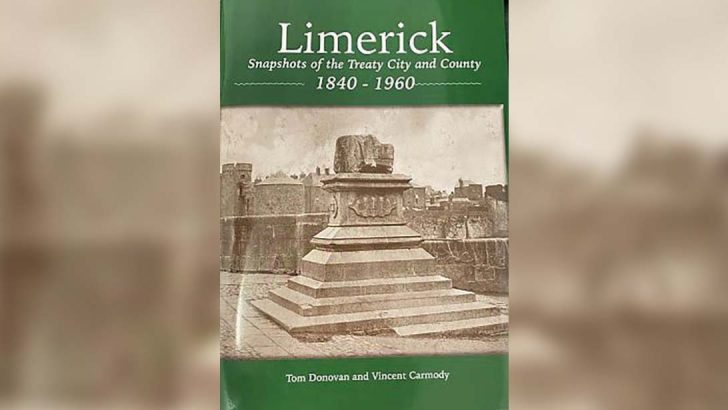Limerick: Snapshots of the Treaty City and County 1840–1960 by Tom Donovan and Vincent Carmody, forward by JP McManus, preface by Matthew Potter (Poundlane Publications, €35.00/£30.00)
Limerick is a much-storied city which traces its origin back to its establishment by the Vikings in 821. The authors take just a snapshot of that history, zooming in on the period from 1840 to 1960. This was a golden age in Limerick commercial and industrial history. It was a time when the industrial revolution had transformed the world economy and the modern, generally family-run, shop had replaced fairs and markets as the principal retail outlets.
Using advertisements, billboards, drawings, invoices, letterheads, photographs, postcards, publicity-posters and other assorted signage the authors present the commercial and industrial enterprises of a bygone age. Beginning with apothecaries and chemists they provide potted histories of each pharmaceutical business and pen-pictures of their proprietors.
The bacon factories are next to attract their attention. Limerick ham was prized at home and abroad and Denny’s, Matteson’s, O’Mara’s and Shaw’s thrived as they supplied meats across Britain and Ireland.
Co. Limerick is located at the centre in the golden vale, hence it was an important centre of the dairy industry. This was conducted by the creameries developed by the co-operative movement. They were dotted throughout the city and country, many of which are here featured in picture and byline.
Cityscape
The authors roam far and wide across the rest of Limerick’s commercial cityscape. The account of its newspapers, printing and booksellers is particularly interesting. The earliest recorded Limerick newspaper is a copy of the Limerick News Letter, dated May 4, 1716. Limerick printers were often associated with or owned newspapers.
Booksellers found it difficult to survive on book sales alone and needed to sell stationery and cognate items to supplement their income. There is an affectionate salute to the Limerick Leader and to O’Mahony’s bookshop in O’Connell Street now trading for 125 years.
Ireland’s history is weaved into the Limerick story. There is a nod in the direction of the Treaty Stone, and the O’Connell monument in the Crescent. It is noted that the well-known Fenian, John Daly, was the founder and proprietor of John Daly’s bakeries.
Recalled
Tragedies of the war of independence are recalled, including the murder on March 7, 1921 by the crown forces of two mayors of Limerick: George Clancy, a sitting mayor and Michael O’Callaghan, his predecessor. And a photograph shows William Street after the Free State army had recaptured the city from the Anti-Treatyites in 1922.
This cornucopia of information is a valuable addition to the local history of Limerick city and county and will be of immense interest to all Limerick people. In the recent past the city had often received bad headlines. It is good to be reminded about its great heritage, on which its future is surely being built.



